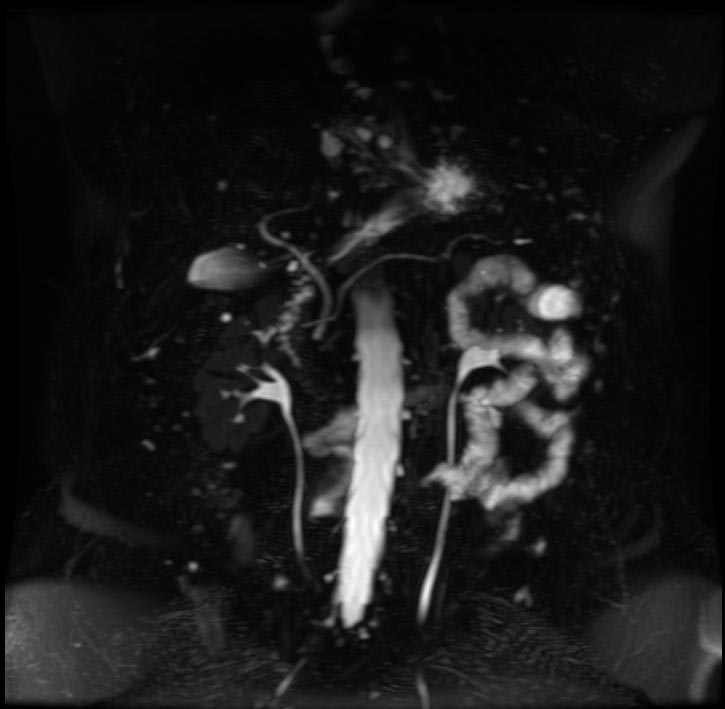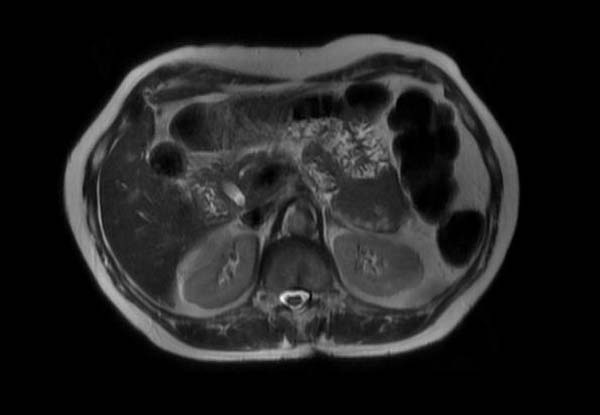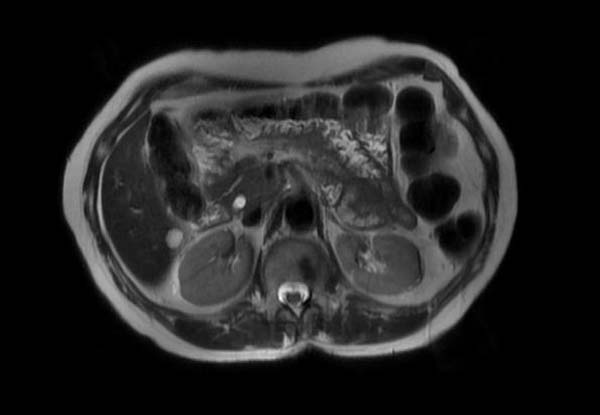Pancreas divisum: Difference between revisions
No edit summary |
No edit summary |
||
| Line 7: | Line 7: | ||
}} | }} | ||
'''For patient information page on this topic, click [[{{PAGENAME}} (patient information)|here]]''' | '''For patient information page on this topic, click [[{{PAGENAME}} (patient information)|here]]'''. | ||
{{CMG}}; {{AE}} [[User:zorkun|Cafer Zorkun]] M.D., PhD. | {{CMG}}; {{AE}} [[User:zorkun|Cafer Zorkun]] M.D., PhD. | ||
Revision as of 17:32, 3 April 2013
| Pancreas divisum | |
 | |
|---|---|
| MRCP: Pancreas divisum. Image courtesy of RadsWiki | |
| DiseasesDB | 31894 |
For patient information page on this topic, click here.
Editor-In-Chief: C. Michael Gibson, M.S., M.D. [1]; Associate Editor(s)-in-Chief: Cafer Zorkun M.D., PhD.
Overview
Pancreas or Pancreatic divisum is a congenital anomaly in the anatomy of the ducts of the pancreas in which a single pancreatic duct is not formed, but rather remains as two distinct dorsal and ventral ducts. [1] [2]
- Variant of the pancreatic ductal system and occurs in 4%–10% of the population.
- Dorsal and ventral anlagen of the pancreas fail to fuse.
- The dorsal duct drains most of the glandular parenchyma through the minor papilla
- The smaller ventral duct drains a portion of the pancreatic head, including the uncinate process, through the major papilla.
- Clinical relevance of pancreas divisum remains controversial.
- Most patients with pancreas divisum are asymptomatic.
- In some patients, this anomaly is associated with recurrent episodes of pancreatitis.
- Postulated that in pancreas divisum, the duct of Santorini and the minor ampulla are too small to adequately drain the secretions produced by the pancreatic body and tail.
Causes
The human embryo begins life with two ducts in the pancreas, these are the ventral duct and the dorsal duct. Normally, the two ducts will fuse together to form one main pancreatic duct; this occurs in more than 90% of embryos. In approximately 10% of embryos the ventral and dorsal ducts fail to fuse together, resulting in pancreas divisum. In utero, the majority of the pancreas is drained by the dorsal duct which opens up into the minor papilla. The ventral duct drains the minority of the pancreas and opens into the major papilla. In adults however, this situation is reversed whereby 70% of the pancreas is drained by the ventral duct. Therefore in pancreas divisum, where fusion of the ducts does not occur, the major drainage of the pancreas is done by the dorsal duct which opens up into the minor papilla.
This is the embryologic progression of the pancreas formation. The 4th picture is a normal pancreas. The duct of santorini or minor papilla was closed and the dorsal pancreas drains into the ventral duct. In pancreas divisum, the last step (4th picture) does not happen. The pancreas formation is halted at the 3rd picture.
Symptoms
A majority of individuals born with pancreas divisum will never have symptoms for their entire life. In most cases, pancreas divisum is only detected during an autopsy of a person that is deceased. However, approximately 1% of those with pancreas divisum will develop symptoms during their lifetime. Symptoms commonly include abdominal pain, nausea and/or vomiting, and pancreatitis. A small number of individuals may develop chronic pancreatitis.
Diagnosis
The most common and accurate way of diagnosing an individual with this anomaly is by an ERCP. This test can demonstrate the presence of two separately draining ducts within the pancreas. Other tests can assist doctors with diagnosis, such as a CT scan and an MRI.
Diagnostic Findings
- The dorsal duct drains most of the glandular parenchyma through the minor papilla
- The smaller ventral duct drains a portion of the pancreatic head, including the uncinate process, through the major papilla.
Patient #1
Patient #2
-
MRCP
Treatment
Pancreas Divisum in individuals with no symptoms do not need treatment. Treatment of those with symptoms varies and has not been very well established. A surgeon may attempt a sphincterotomy by cutting the minor papilla to enlarge the opening and allow pancreas enzymes to flow normally. During surgery, a stent may be inserted into the duct to ensure that the duct will not close causing a blockage. As with any surgery, this operation is not risk-free. This surgery can cause pancreatitis in patients, or in rare cases, kidney failure and death.
An association with adenoma of the minor papilla has been reported.[3]
References
- ↑ Jorge A. Soto, Brian C. Lucey, and Joshua W. Stuhlfaut. Pancreas Divisum: Depiction with Multi–Detector Row CT. Radiology 2005 235: 503-508.
- ↑ Yu, Jinxing, Turner, Mary Ann, Fulcher, Ann S., Halvorsen, Robert A. Congenital Anomalies and Normal Variants of the Pancreaticobiliary Tract and the Pancreas in Adults: Part 2, Pancreatic Duct and Pancreas. Am. J. Roentgenol. 2006 187: 1544-1553.
- ↑ Nakamura Y, Tajiri T, Uchida E; et al. (2007). "Adenoma of the minor papilla associated with pancreas divisum". Hepatogastroenterology. 54 (78): 1841–3. PMID 18019730.
See Also
External Links
Template:Congenital malformations and deformations of digestive system de:Pankreas divisum



